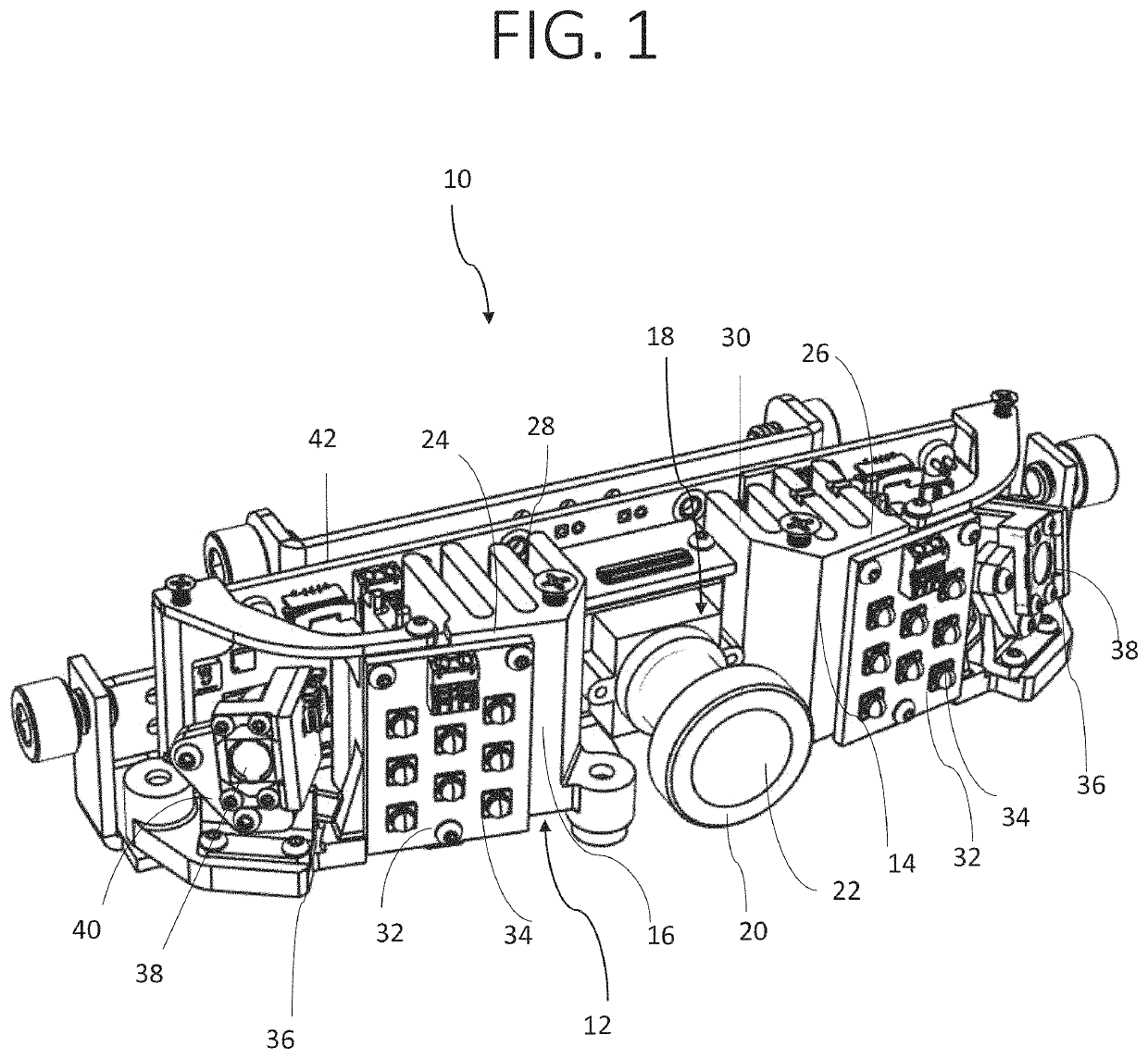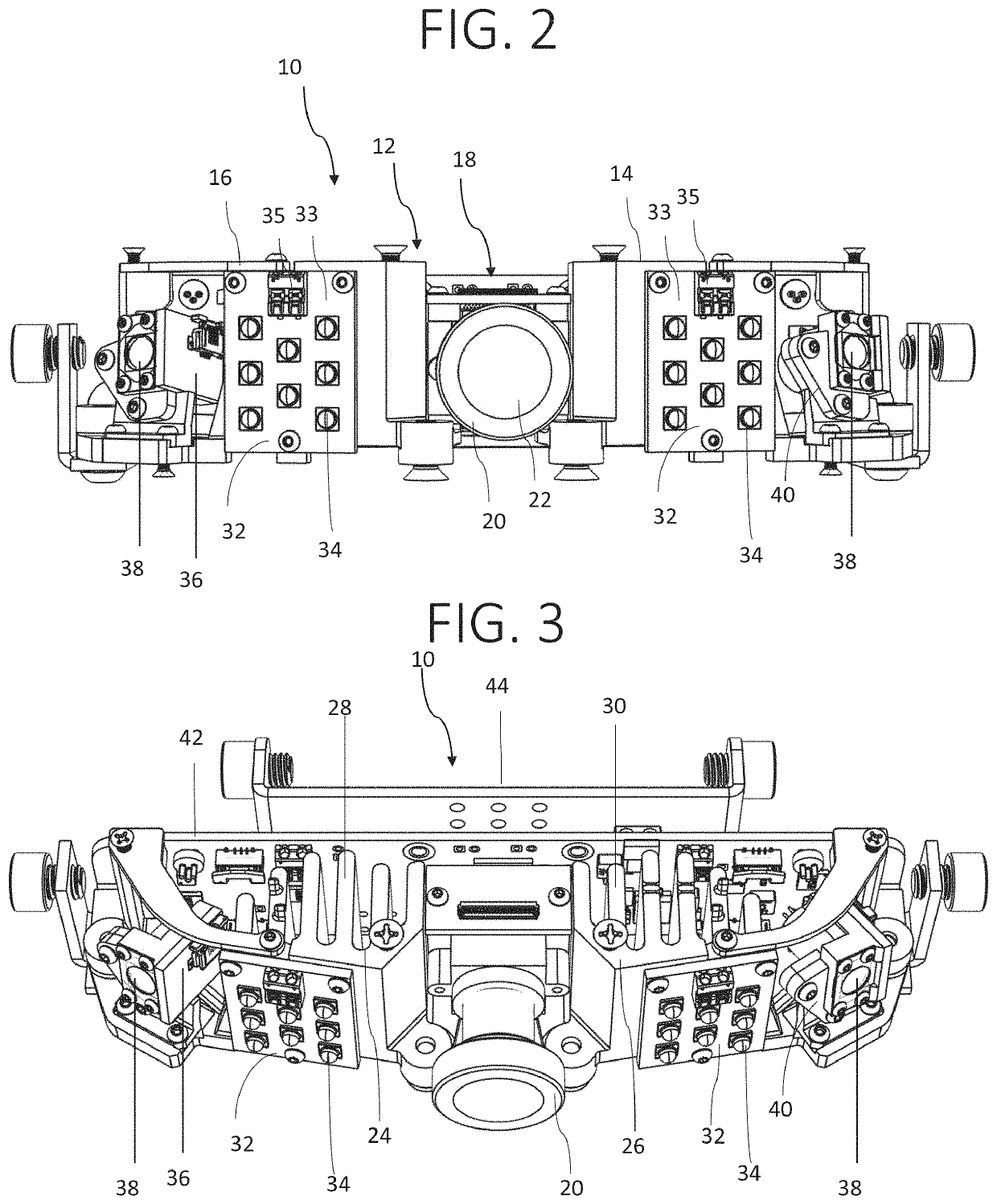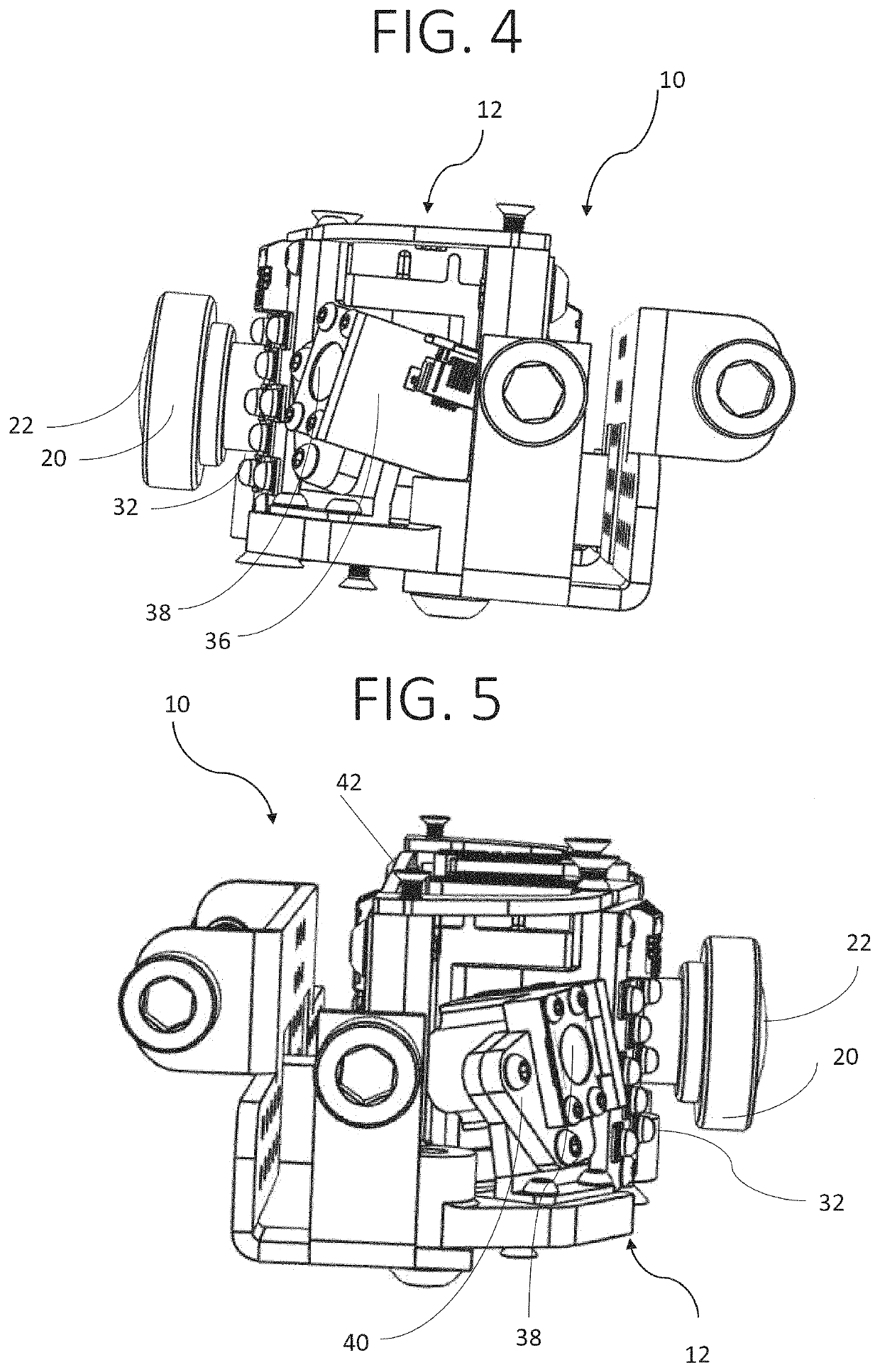Device for monitoring vehicle occupant(s)
a technology for monitoring devices and vehicle occupants, applied in the direction of instruments, color televisions, television systems, etc., can solve the problems of tight manufacturing tolerance requirements, reduced performance, and difficulty in producing single laser and diffractive optical elements, and achieve stable base for optical components and effective heat dissipation
- Summary
- Abstract
- Description
- Claims
- Application Information
AI Technical Summary
Benefits of technology
Problems solved by technology
Method used
Image
Examples
Embodiment Construction
[0049]The present invention, in some embodiments thereof, relates to a device for monitoring one or more vehicle occupants, and more particularly, but not exclusively, to a device for monitoring one or more vehicle occupants that is mountable in the roof of a car.
[0050]Before explaining at least one embodiment of the invention in detail, it is to be understood that the invention is not necessarily limited in its application to the details of construction and the arrangement of the components and / or methods set forth in the following description and / or illustrated in the drawings and / or the Examples. The invention is capable of other embodiments or of being practiced or carried out in various ways.
[0051]As used in this disclosure, the term “optical component” includes any device suitable for generating light or for capturing light as part of an optical system, including, but not limited, to a laser, an LED, or a camera.
[0052]As used in this disclosure, the term vehicle means a road b...
PUM
 Login to View More
Login to View More Abstract
Description
Claims
Application Information
 Login to View More
Login to View More - R&D
- Intellectual Property
- Life Sciences
- Materials
- Tech Scout
- Unparalleled Data Quality
- Higher Quality Content
- 60% Fewer Hallucinations
Browse by: Latest US Patents, China's latest patents, Technical Efficacy Thesaurus, Application Domain, Technology Topic, Popular Technical Reports.
© 2025 PatSnap. All rights reserved.Legal|Privacy policy|Modern Slavery Act Transparency Statement|Sitemap|About US| Contact US: help@patsnap.com



